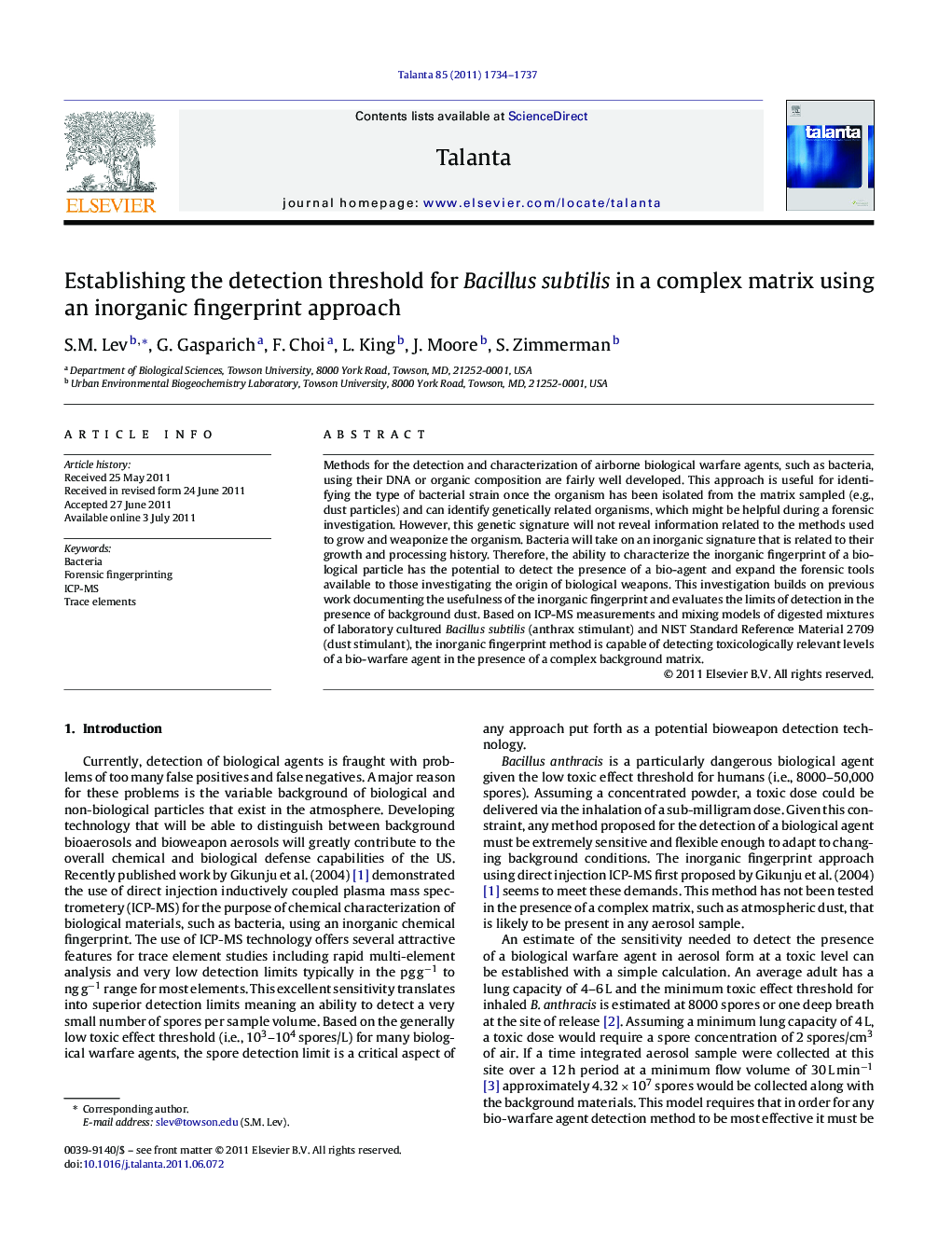| Article ID | Journal | Published Year | Pages | File Type |
|---|---|---|---|---|
| 10559450 | Talanta | 2011 | 4 Pages |
Abstract
Methods for the detection and characterization of airborne biological warfare agents, such as bacteria, using their DNA or organic composition are fairly well developed. This approach is useful for identifying the type of bacterial strain once the organism has been isolated from the matrix sampled (e.g., dust particles) and can identify genetically related organisms, which might be helpful during a forensic investigation. However, this genetic signature will not reveal information related to the methods used to grow and weaponize the organism. Bacteria will take on an inorganic signature that is related to their growth and processing history. Therefore, the ability to characterize the inorganic fingerprint of a biological particle has the potential to detect the presence of a bio-agent and expand the forensic tools available to those investigating the origin of biological weapons. This investigation builds on previous work documenting the usefulness of the inorganic fingerprint and evaluates the limits of detection in the presence of background dust. Based on ICP-MS measurements and mixing models of digested mixtures of laboratory cultured Bacillus subtilis (anthrax stimulant) and NIST Standard Reference Material 2709 (dust stimulant), the inorganic fingerprint method is capable of detecting toxicologically relevant levels of a bio-warfare agent in the presence of a complex background matrix.
Keywords
Related Topics
Physical Sciences and Engineering
Chemistry
Analytical Chemistry
Authors
S.M. Lev, G. Gasparich, F. Choi, L. King, J. Moore, S. Zimmerman,
